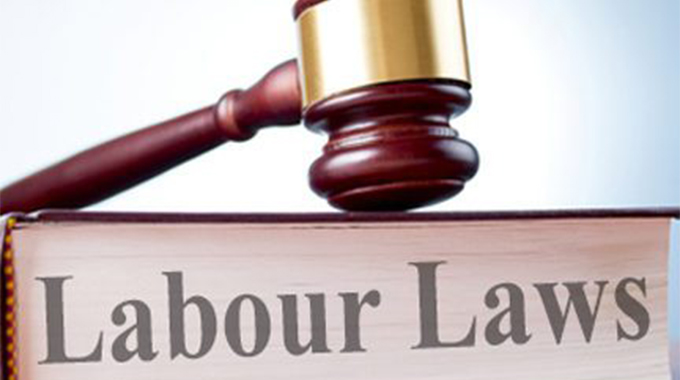
Labour Matters, Davies Numiso Sibanda
MANY organisations have labour relations problems which they blame on human resources staff, yet the responsibility for the tone of labour relations in an organisation lies with the chief executive.
Not long ago, I met a chief executive who was pursuing a losing battle against employees all the way to the Labour Court against the advice of his human resources team, the labour consultant and company lawyers.
He was boasting that he doesn’t care as he was using the company’s money and the workers would go broke and give up.
In my view, such a chief executive deserves to be fired as he does not know that one of his key responsibilities is to save money and at the same time treat employees fairly while building a winning team.
For the chief executive to achieve results, there is a need to have quality human capital trained for their present jobs and developed for their future jobs.
Employees must be drawn towards each other to build a powerful team that is organisational goals-focused.
Chief executives with no labour relations skills have been known to drive employees to leave the organisation or going up against them.
At his or her disposal the chief executive officer has a number of tools to drive productivity but many chief executive officers (CEOs) fail to use the tools because they are not skilled in their use.
The workers’ committee is one of the most useful tools in communicating the organisation’s vision and goals but is not used effectively because the CEO sees it as a bunch of trouble makers or fools.
He or she does not see its value in keeping the organisation and functional teams together.
Further, he does not use it in problem solving and driving productivity and many others.
It is easy to tell a chief executive who has abdicated his responsibility for his human capital.
He does not see people as assets and as such he has no deliberate planned maintenance programme for his human assets. He has no asset repair plan and disposal of human capital assets without weighing the pros and cons is common. Where the major tool for managing the workers’ committee, is using threats of dismissal, there is a problem and the chief executive needs help.
Problem chief executives are also unable to fully utilise the works council.
The whole management team is made of managers who assume the role of the works council and they have never read the legislation that provides for the formation of the works council.
They see any training on the role and conduct of works council meetings as a waste of time thus they fail to unleash the value of the works council on the business.
There are also chief executives who conduct meetings to tell people what to do all the time.
Their management meetings are as if people are at a funeral or are waiting to be hanged.
The chief executive is a serious stress emitter, he is a bad listener and is a dictator, thus he loses out from benefiting from team members’ input.
One indicator of bad labour relations management on the part of the chief executive is having a human capital representative who occupies an inferior position compared to other head of departments (HODs).
He is not listened to by other members of senior management.
People are recruited and dismissed without his knowledge.
He is only called to clean the mess after some bad industrial relations decisions have come back to bite the organisation.
Where you find the workers’ committee members resigning as a group or workers avoiding forming a workers’ committee, at times some workers refusing to serve in the workers’ committee, then there is a serious labour relations management problems.
There are also cases where workers committee members have refused to attend works council meetings for fear of victimisation.
All these point at the CEO’s limited human relations skills.
Frequent dismissal of employees, and having a large number of disciplinary cases being appealed outside shows that the organisation has challenges with industrial relations.
Work stoppages and threats of work stoppages are a sign of labour relations problems.
Frequent use of the trade union to deal with simple workers issues that are not covered by the Collective Bargaining Agreement (CBA) is a sign that the CEO is struggling to steady the ship as far as labour relations are concerned.
At times the chief executive’s failures reflect on the quality of the human resources team and the quality of HODs the organisation has, or it could mean he is not getting or taking their advice.
All these challenges can be effectively managed through various industrial relations interventions.
In conclusion, organisations should ensure CEOs have human capital management strategic decision-making skills and ensure that all in managerial positions are trained in labour relations and labour laws so as to set the correct labour relations tone.
- Davies Ndumiso Sibanda can be contacted on: email: [email protected]
